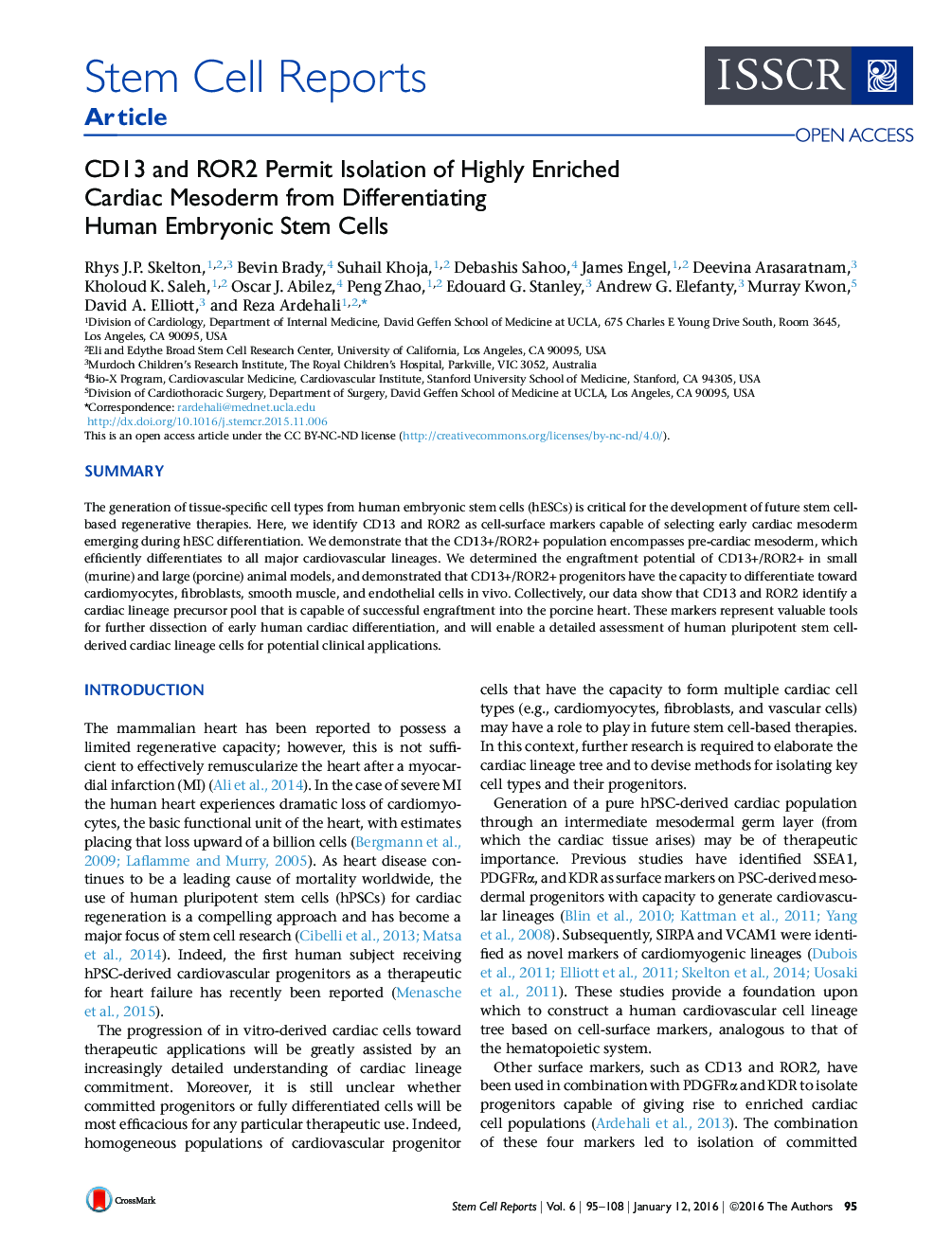| Article ID | Journal | Published Year | Pages | File Type |
|---|---|---|---|---|
| 2093292 | Stem Cell Reports | 2016 | 14 Pages |
•CD13 and ROR2 separate hESC-derived MIXL1+ mesoderm from MIXL1+ endoderm•CD13 and ROR2 select for a population of highly enriched pre-cardiac mesoderm•CD13+/ROR2+ cells derived from hESCs engraft into porcine, but not murine hearts•CD13+/ROR2+ cells differentiate to all major cardiac lineages in the pig heart
SummaryThe generation of tissue-specific cell types from human embryonic stem cells (hESCs) is critical for the development of future stem cell-based regenerative therapies. Here, we identify CD13 and ROR2 as cell-surface markers capable of selecting early cardiac mesoderm emerging during hESC differentiation. We demonstrate that the CD13+/ROR2+ population encompasses pre-cardiac mesoderm, which efficiently differentiates to all major cardiovascular lineages. We determined the engraftment potential of CD13+/ROR2+ in small (murine) and large (porcine) animal models, and demonstrated that CD13+/ROR2+ progenitors have the capacity to differentiate toward cardiomyocytes, fibroblasts, smooth muscle, and endothelial cells in vivo. Collectively, our data show that CD13 and ROR2 identify a cardiac lineage precursor pool that is capable of successful engraftment into the porcine heart. These markers represent valuable tools for further dissection of early human cardiac differentiation, and will enable a detailed assessment of human pluripotent stem cell-derived cardiac lineage cells for potential clinical applications.
